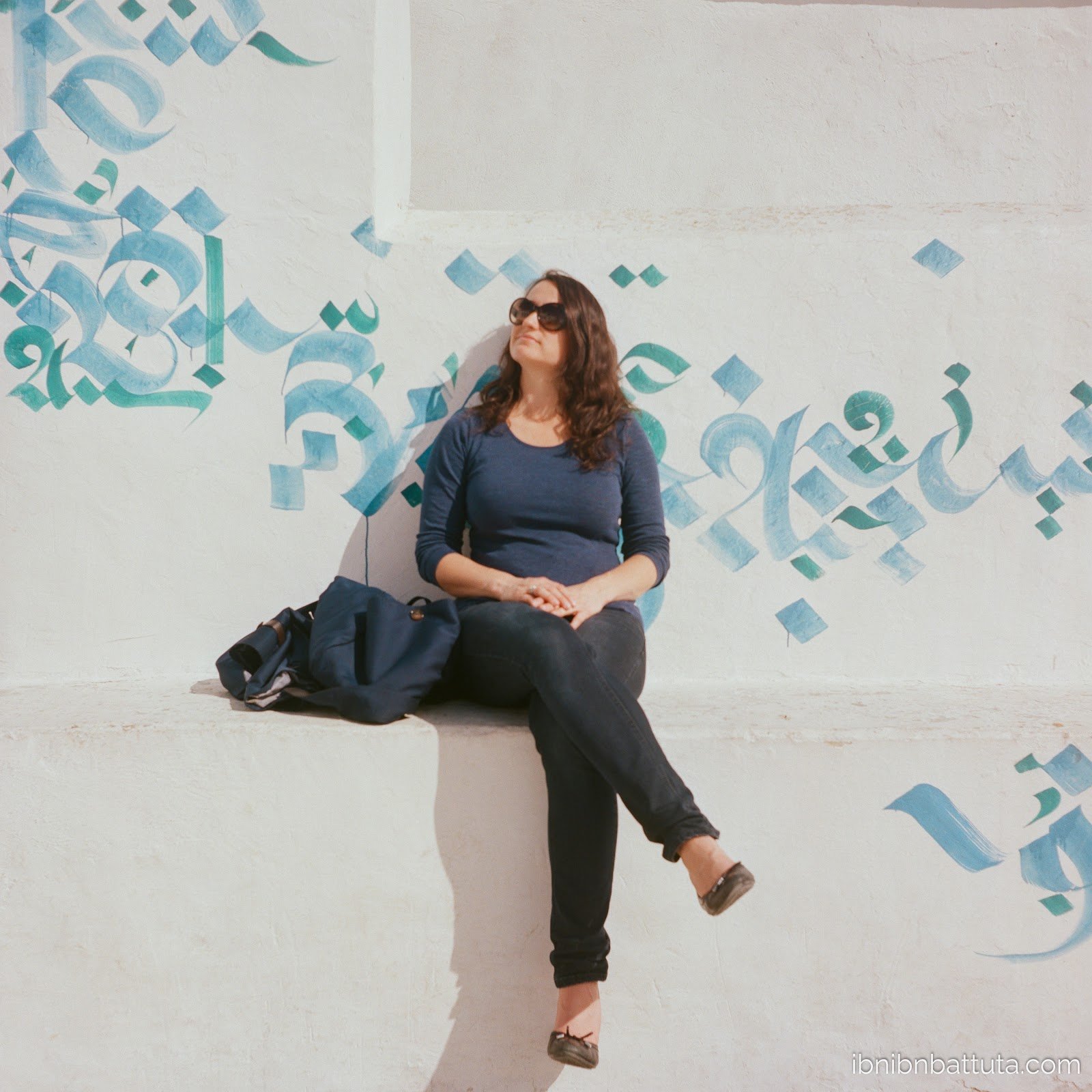In Tunis, New Hopes Built on Old Stones
Nina in Sidi Bou Said
After nearly a decade of living in Algeria and Morocco and traveling across the Arab world, last year I finally made it to little Tunisia, Algeria's small but plucky neighbor. Since an initial weekend trip to Tunis with Nina and friends, I've returned to the city twice more for work. Meetings kept me from ranging farther than Tunis and its posh seaside suburbs, so I have yet to see the rest of the country, but I'm already becoming a fan.
Tunis rings a series of bays and inland estuaries along the Mediterranean coast. Spacious and verdant, it feels far less congested than Algiers, where the buildings cram in around a single bay. From the ancienne medina and the colonial-era downtown it's just a short drive through the suburbs to the ruins of Carthage, the ancient Punic city that rivaled Rome in its heyday (and then was sacked by it in 146 BC, ending said heyday). Last spring Nina and I joined our friends Ryan and Alex in exploring all that's left of the once-great city, now just a massive collection of topsy-turvy pavers, tumbled columns, and eroded baths scattered among the coastal pine forests.
Carpet closeup
Besides Carthage, we spent much of our time in nearby La Marsa (the beach town that's home to most of Tunis's expats) and Sidi Bou Said, the uniformly blue-and-white hillside quarter that is every Instagram influencer's dream backdrop. Visiting places like these, it's easy to see why Tunis has long been a popular tourist destination—and why it's bouncing back so fast after the instability of recent years. Newspapers back home are full of articles lauding Tunis's museums, beaches, shopping, and more. It's destination number one for Algerians (as the only nearby country they can drive to and enter without a visa), while also serving as a reminder of just how many tourists Algeria could attract if it would make any sincere effort to encourage the sector.
For me and Nina, these visits were also a chance to scout out a potential future for ourselves. In search of new horizons, we have begun talking about a life after Algeria, and Tunisia is one of several options that keep arising in discussions of possible destinations.
A traditional restaurant in the medina of Tunis
For everyone else, of course, Tunisia is perhaps best known as the starting point of the Arab Spring—and its only obvious success story. Even that narrative is under threat, however, as the economy has flagged in recent years, placing added stress on both the government and the governed in this nascent democracy. The Tunisians who chatted with me (in their curious, sing-songy dialect that combines familiar aspects of Algerian Arabic with a Levantine lilt) shared a mix of modest hope for the future and substantial hardship in the here-and-now. For a small country, it's a complex place though, and one I would need to spend time in to understand more deeply.
As tourists and travelers, where we spend our money matters; it's a key factor Nina and I weigh when planning trips. These days you'd be hard pressed to find somewhere that could put your tourist dollars to better use than Tunisia, the nation that just might finally put the lie to centuries of outsiders' misjudgments, dictators' narratives, and universally low expectations for the Arab world.
Andrew and Ryan in Carthage
My Rolleiflex photos from Tunis are available here: 2018 Rollei - Tunis and 2019 Rollei - Tunis.




